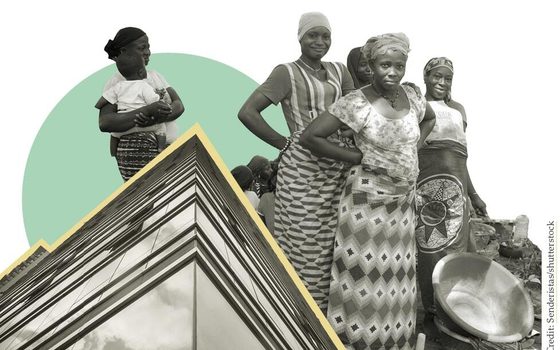Levelling down
This government's levelling-up project has failed: households are down £1300 a year since 2015.
11 December 2023
The UK has some of the highest inequality between different regions in the OECD. Successive prime ministers have promised to rectify this. But analysis we’ve conducted at NEF has found that, when it comes to regional inequality, we’re moving backwards. And it’s families in the north of England who have been hit hardest, losing over £1300 in yearly income since 2015.
To understand how regions have been made worse off, we break down changes in household income into different periods. Regional divides have existed for decades in the modern British economy, but between 2015 and 2019, these were exacerbated by policy choices under both David Cameron and Theresa May. Households receiving social security payments had their incomes capped by harsher limits and new rules on eligibility. These changes exacerbated existing regional inequalities as poorer regions were more dependent on social security in the first place.
Furthermore, cuts to public services made us all poorer by squeezing public sector wages. The continuation of austerity policies spilled out into the wider economy in the form of reduced demand and government underinvestment, contributing to the productivity crisis keeping private wages low.
Our results show that between 2015 and 2019, the average household in the north-east saw their income fall by nearly £1000. In contrast, households in the south-east and east of England were slightly better off, by an average of £130 and £180, respectively.
Figure 1: regions become more unequal under David Cameron and Theresa May
In 2019, Boris Johnson was elected with a promise to “level up the country” – meaning, to improve the economic prospects of previously deprived regions. The reality did not, however, meet the rhetoric. Instead, inflation outstripped wage growth across the board, making households in all regions poorer. This government contributed by refusing real-terms pay rises for public sector workers and by continuing to underinvest in the economy it was unable to stop prices rising faster than incomes in both public and private sectors leaving everybody worse off. Our results show that households in every region have seen their yearly incomes fall by roughly £800‑1000 since Johnson took power in 2019. Combined with the losses from 2015, this has lost households in many regions (including all of the north of England) over £1300 compared to their yearly income in 2015.
Figure 2: All regions have “levelled down” under this government
Last week, the chancellor gave his autumn statement, which included tax cuts which will only further widen regional divides. Jeremy Hunt cut national insurance from 12% to 10%, a move which means bigger tax cuts for the wealthier regions of the UK, as the cuts are worth more to those who pay more tax. The combined policy changes at the autumn statement would be worth £580 to the average family in London versus only £350 for a family in the north-east.
This government has strict rules about how much it is able to borrow, and cutting taxes means less revenue going to the Treasury. These tax cuts were only possible under the government’s debt and borrowing rules due to the Office for Budget Responsibility (OBR) expecting greater inflation than before – increasing forecasted tax revenue but not public spending. Therefore, these tax cuts have been essentially funded by real-term cuts to public services. While households may be gaining a few hundred pounds, this will come at the cost of lower-quality public services in the future, along with likely further public sector wage cuts and wider negative effects austerity has on the economy.
Figure 3: Jeremy Hunt’s tax cuts were focused on richer regions
Despite government rhetoric about reviving economically disadvantaged regions these places have become worse off. This government could have chosen to raise take-home incomes in more deprived regions by boosting social security payments, raising public sector wages, and investing in green industries. Their choices haven’t levelled the country up – they’ve made all of us poorer.
Table 1: All households worse off after latest autumn budget
Change (£, 2024/25 prices, rounded) in family disposable income between April 2015 and April 2024 by UK region, income changes broken down before and after April 2019 and before and after autumn statement policy announcements (budget change). Overall changes from April 2015/2019 and April 2024 after autumn statement changes also included.
| 2015 – 2019 | 2019 – 2024 | Budget change | Overall change 2015 – 2024 | Overall change, 2019 – 2024 | |
| North-east | -£960 | -£740 | £350 | -£1,350 | -£390 |
| North-west | -£450 | -£910 | £390 | -£970 | -£520 |
| Yorks and Humberside | -£460 | -£900 | £360 | -£990 | -£530 |
| East Midlands | -£240 | -£930 | £390 | -£780 | -£540 |
| West Midlands | -£490 | -£840 | £370 | -£960 | -£460 |
| East | £180 | -£870 | £490 | -£210 | -£390 |
| London | -£500 | -£790 | £580 | -£710 | -£210 |
| South-east | £130 | -£1,020 | £520 | -£370 | -£500 |
| South-west | -£420 | -£990 | £450 | -£950 | -£530 |
| Wales | -£400 | -£710 | £350 | -£760 | -£360 |
| Scotland | -£350 | -£600 | £410 | -£550 | -£200 |
| Northern Ireland | -£360 | -£830 | £410 | -£780 | -£420 |
Source: NEF analysis of the Family Resource Survey using the IPPR benefit model, April 2024 data uses data from latest OBR forecast.
The bottom 5% of incomes are removed due to unreliable income in the FRS.
Image: iStock
Topics Inequality






